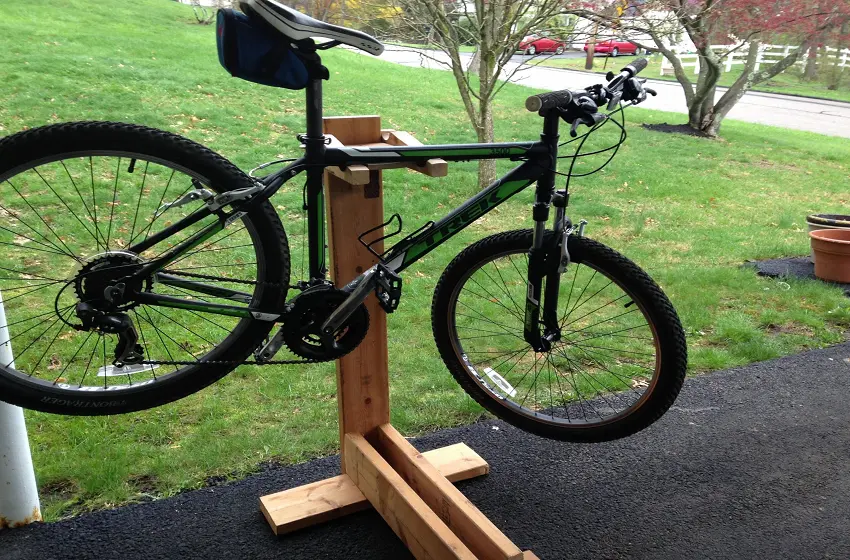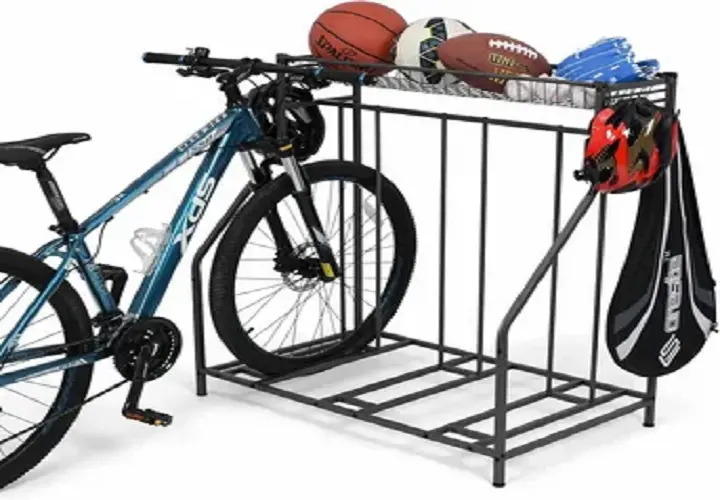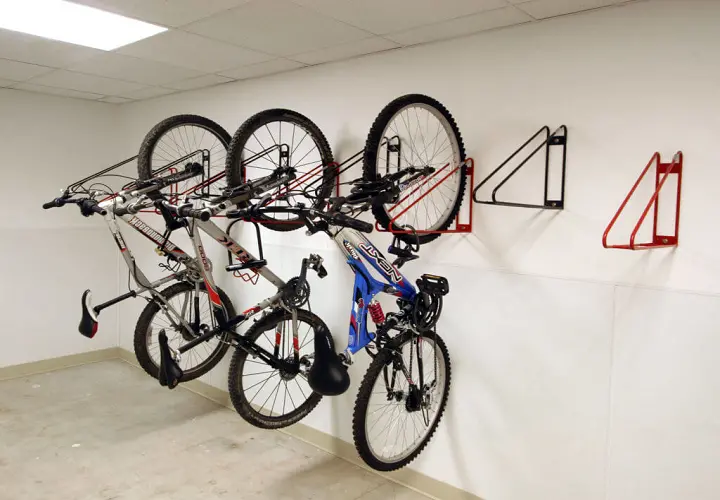For cycling enthusiasts and casual riders alike, proper bike storage isn’t just a convenience—it’s essential. A quality bike stand transforms your space while protecting your valuable two-wheeler from damage.
Let’s dive deep into everything you need to know about selecting, installing, and maintaining the perfect bike stand solution.
The Evolution of Bike Storage
Before we explore modern solutions, let’s understand how bike storage has evolved:
1890s-1920s
- Simple wooden racks
- Basic metal hooks
- Predominantly commercial use
- Limited home storage options
1950s-1980s
- Introduction of floor stands
- Development of repair stands
- Basic wall mount systems
- Commercial parking solutions
Modern Era (1990s-Present)
- Smart storage systems
- Electronic lift mechanisms
- Carbon fiber-friendly designs
- Space-optimization focus
Why Your Bike Deserves Better Than Wall-Leaning
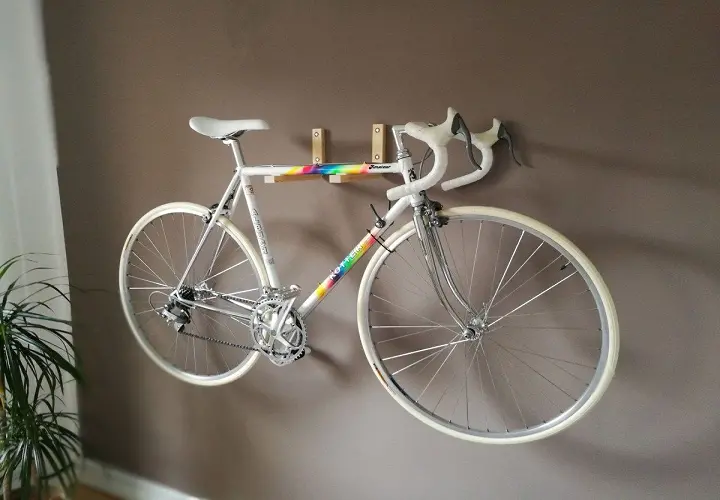
Your bicycle represents both an investment and a commitment to sustainable transportation. Here’s why proper storage matters more than you might think:
Physical Protection
- Frame Protection: Prevents stress on frame tubes
- Component Safety: Keeps derailleurs and cables safe
- Wheel Care: Eliminates tire deformation
- Paint Preservation: Avoids scratches and scuffs
Space Optimization
- Reduces floor footprint by up to 70%
- Creates organized storage systems
- Maximizes vertical space usage
- Improves garage/home organization
Maintenance Benefits
- Easier access for cleaning
- Better visibility for inspection
- Simplified maintenance procedures
- Improved workshop efficiency
“The difference between a well-maintained bike and a neglected one often comes down to how it’s stored.” – Chris Carmichael, Olympic Cycling Coach
Types of Bike Stands: A Comprehensive Overview
Floor Stands: Versatility Meets Convenience
Gravity Stands
Features:
- Dual contact point system
- Adjustable arms for different frame sizes
- Multiple bike capacity (2-6 bikes)
- Minimal assembly required
Best Uses:
- Apartment storage
- Temporary solutions
- Multiple bike households
- Rental properties
Price Ranges:
- Entry-level: $40-75
- Mid-range: $75-120
- Premium: $120-200
Two-Point Contact Stands
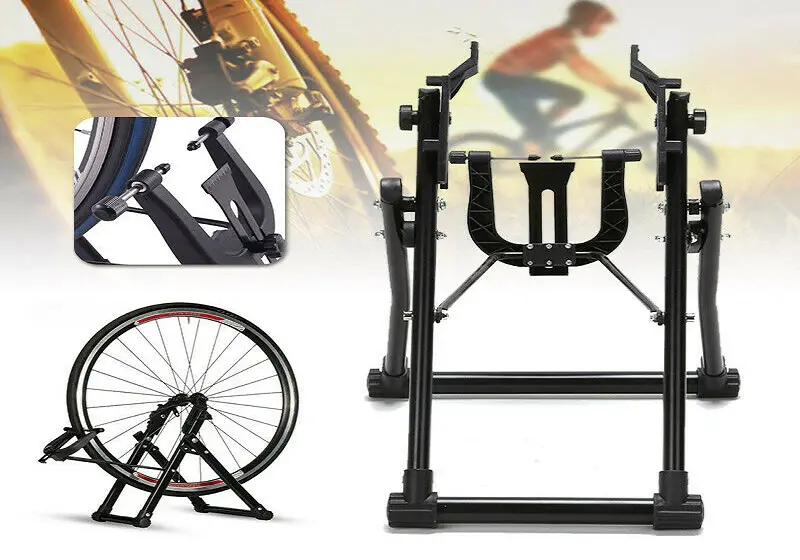
Design Elements:
- Stabilizing base plate
- Adjustable height
- Quick-release mechanisms
- Rubber protection points
Space Requirements:
- Width: 24-30 inches
- Depth: 20-24 inches
- Height: 65-75 inches
- Clearance: 12-inch radius
Multi-Bike Solutions
Capacity Features:
- Support for 3-6 bikes
- Weight distribution system
- Independent bike access
- Modular expansion options
Wall-Mounted Solutions: Space-Saving Innovation
Horizontal Mounts
Installation Considerations:
- Stud location requirements
- Weight capacity verification
- Clearance measurements
- Tool accessibility
Material Options:
- Powder-coated steel
- Aircraft-grade aluminum
- Reinforced composites
- Stainless steel hardware
Vertical Hooks
Protection Features:
- Rubber coating
- Wide contact points
- Adjustable angles
- Load distribution design
Installation Heights:
- Standard ceiling (8 ft): 72-inch mount
- High ceiling (9+ ft): 84-inch mount
- Basement (7 ft): 60-inch mount
- Custom installations available
Ceiling Storage: Maximum Space Utilization
Pulley Systems
Safety Features:
- Auto-locking mechanisms
- Safety cables
- Load limiters
- Emergency release
Operation Details:
- Single-person operation
- Smooth lifting action
- Secure locking system
- Easy maintenance access
Material Science: Understanding Your Stand’s Construction
Steel Construction
Benefits:
- Superior strength
- Excellent stability
- Long-term durability
- Cost-effective
Considerations:
- Weight limitations
- Rust potential
- Installation challenges
- Maintenance needs
Aluminum Advantages
Key Features:
- Lightweight design
- Corrosion resistance
- Modern aesthetics
- Premium finish options
Applications:
- Portable stands
- High-end installations
- Moisture-prone areas
- Weight-sensitive locations
Composite Materials
Innovative Features:
- Weather resistance
- Chemical stability
- Color options
- Impact resistance
Installation Mastery: Beyond Basic Mounting
Professional Installation Tips
Pre-Installation Checklist:
- Wall material assessment
- Stud location mapping
- Weight capacity calculation
- Tool inventory verification
Installation Steps:
- Surface preparation
- Pilot hole drilling
- Anchor installation
- Mount securing
- Safety testing
DIY Installation Guide
Required Tools:
- Heavy-duty drill
- Stud finder
- Level (laser preferred)
- Socket set
- Measuring tape
- Pencil
- Safety equipment
Common Mistakes to Avoid:
- Skipping stud location
- Incorrect anchor choice
- Poor height placement
- Inadequate testing
Maintenance Excellence: Protecting Your Investment
Weekly Checks
Quick Inspection Points:
- Connection tightness
- Protection pad condition
- Moving part operation
- Stand stability
Monthly Maintenance
Detailed Tasks:
- Hardware tightening
- Lubrication application
- Surface cleaning
- Stress point inspection
Seasonal Care
Comprehensive Review:
- Complete disassembly
- Deep cleaning
- Part replacement
- Stability testing
Special Applications: Beyond Standard Bikes
E-Bike Considerations
Unique Requirements:
- Enhanced weight capacity
- Charging access
- Battery removal clearance
- Security features
Carbon Frame Protection
Critical Factors:
- Pressure point distribution
- Material compatibility
- UV protection
- Temperature considerations
Racing Bike Storage
Special Needs:
- Aerodynamic consideration
- Quick access design
- Transportation compatibility
- Competition prep space
Expert Product Reviews: 2024’s Top Choices
Premium Category
Feedback Sports Pro-Elite
- Price: $275
- Weight capacity: 85 lbs
- Construction: Aircraft aluminum
- Features: 360° rotation
- User rating: 4.9/5
Park Tool PRS-25
- Cost: $315
- Capacity: 100 lbs
- Material: Steel construction
- Features: Team race stand
- Rating: 4.8/5
Mid-Range Options
Topeak PrepStand Pro
- Price: $189
- Capacity: 55 lbs
- Material: Aluminum alloy
- Features: Foldable design
- Rating: 4.7/5
Budget-Friendly Choices
Bikehand Pro Mechanic
- Cost: $89
- Capacity: 55 lbs
- Material: Alloy steel
- Features: Workshop quality
- Rating: 4.6/5
Environmental Considerations
Sustainable Materials
Eco-Friendly Options:
- Recycled aluminum
- Sustainable steel
- Biodegradable components
- Local manufacturing
Energy Efficiency
Storage Solutions:
- Solar-powered lifts
- LED illumination
- Power-free operation
- Minimal carbon footprint
Future Trends in Bike Storage
Smart Technology Integration
Emerging Features:
- IoT connectivity
- Automated security
- Climate control
- Usage tracking
Space Optimization
Innovation Areas:
- Modular systems
- Multi-purpose design
- Urban solutions
- Compact storage
Making Your Final Decision
Assessment Criteria
Key Considerations:
- Available space
- Bike collection
- Budget range
- Usage patterns
- Installation requirements
Long-Term Planning
Future Considerations:
- Collection growth
- Space changes
- Maintenance needs
- Upgrade paths
Conclusion: Investing in Your Cycling Future
A quality bike stand represents more than just storage—it’s an investment in your cycling lifestyle and equipment protection. Consider your specific needs, space constraints, and future plans when making your selection.
Remember these essential points:
- Quality matters more than initial cost
- Installation is crucial for safety
- Regular maintenance extends lifespan
- Future flexibility adds value
Whether you’re a casual rider or serious cyclist, the right bike stand enhances your cycling experience while protecting your valuable equipment. Use this comprehensive guide to make an informed decision that serves your needs today and tomorrow.

With over 9 years of dedicated experience in the automotive industry, I am passionate about all things automotive. My journey began with a deep curiosity for automobiles, which led me to delve deeper into their mechanics, technology and trends. My expertise spans various aspects of the automotive world, from the latest electric vehicles to classic car restoration techniques. Through my articles, I aim to share my knowledge and insights, helping readers stay informed and inspired in the fast-paced world of the automobile.
